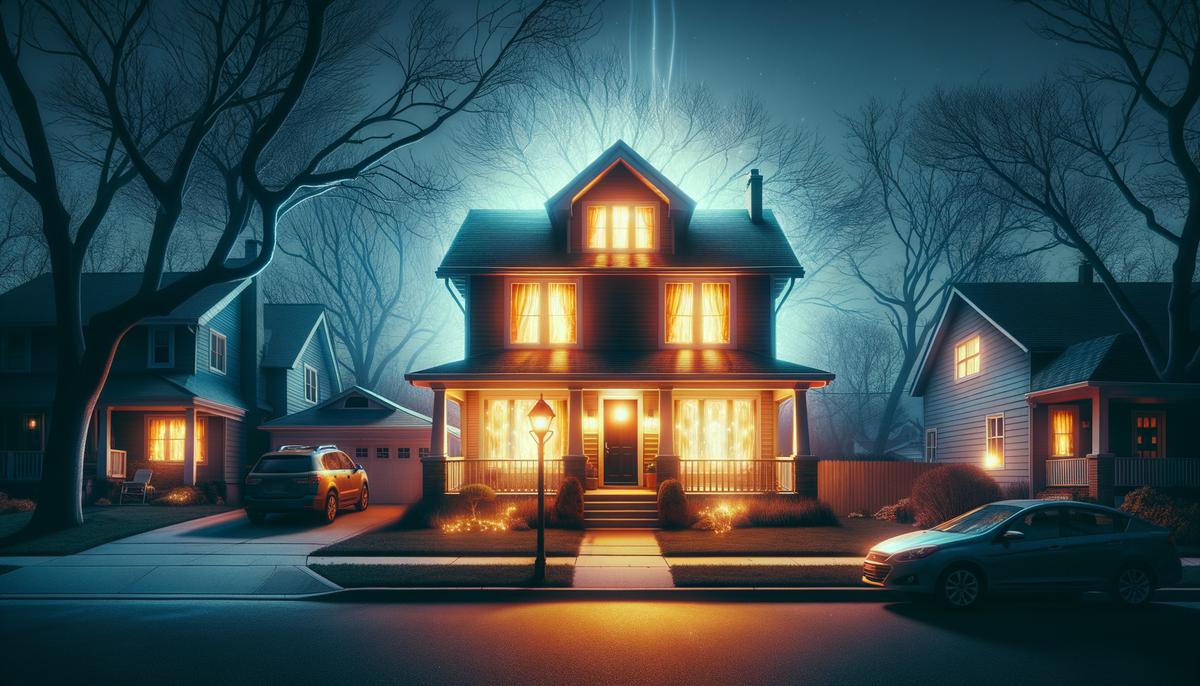Imagine a quiet evening in your home, the kind where every creak and groan of the house seems amplified. Suddenly, an unexpected noise disrupts the calm, making you question whether it's just the house settling or something more unsettling. This scenario sets the stage for a deeper look into the mysterious world of poltergeist activity, where ordinary homes become sites of extraordinary events.
Historical Cases of Poltergeist Activity
On a normal evening in Seaford, Long Island, 1958, James Herrmann received an unsettling call from his wife, Lucille. She and their teenagers had heard inexplicable popping sounds around the house. Investigating, they discovered uncapped bottles spilled, creating an unnerving mess.
Initially skeptical, James thought it was a prank. But as days passed, the popping noises persisted, bottles continued to fly, and even James witnessed bizarre movements. With rational explanations exhausted, he called the police.
Law enforcement ruled out radio transmissions or electrical disturbances. On February 17, a priest blessed the home, but the eerie events continued. The Herrmann house was a modern suburban model purchased new in 1953, adding a bewildering twist to their predicament.
The media frenzy that followed added to the spectacle. Life Magazine featured their story, and the Herrmanns became the subject of national curiosity. Dr. J.B. Rhine, director of Duke University's Parapsychology Laboratory, believed the teenage presence might have stirred up the poltergeist activity.
With about 70 documented disturbances, the Herrmanns endured a roller coaster of inexplicable phenomena. By March 10, the activity abruptly ceased. The family eventually moved away, perhaps hoping their next home would promise peace and fewer flying bottles.
The legacy of the Herrmann house influenced popular culture, including the 1982 movie Poltergeist. The film presented an amplified version of the Herrmann ordeal, with clear parallels despite Hollywood additions.
The Herrmanns' story remains an uneasy reminder that sometimes, in the comfort of our suburban homes, the boundary between the mundane and the supernatural is thinner than we might like to believe.
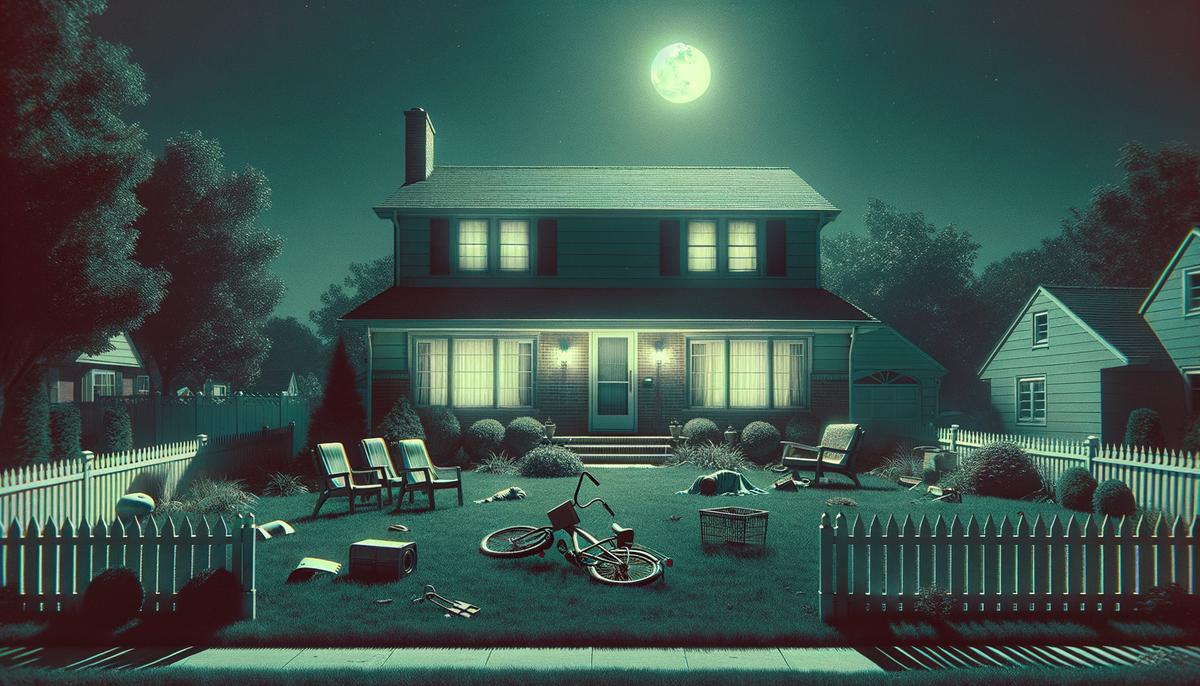
Characteristics of Poltergeist Activity
Unexplained noises are a hallmark of poltergeist activity. These aren't typical house-settling sounds, but more visceral and alarming – disembodied voices, eerie whispers, or the sound of footsteps when nobody's around.
The movement of objects with no apparent cause is a spine-tingling aspect. A spoon might lift off the counter and hover before dropping, furniture rearranges itself, and lights flicker as if under an invisible hand's control. These disturbances challenge our sense of normalcy.
Poltergeist activity often involves a physical element, setting it apart from other paranormal phenomena. Items are flung across rooms, heavy furniture moves audibly, and even structural damage can occur. This tangible interaction creates a sense of vulnerability.
What truly distinguishes poltergeist activity is its unpredictability. Their antics can range from mildly annoying to distinctly malevolent, varying in frequency and severity. This lack of pattern leaves inhabitants on edge.
Initially, these disturbances might seem like mischievous pranks, but they can escalate into more aggressive actions. Scratches on walls, broken objects, and even physical harm to residents have been reported in severe cases.
Comparison of Paranormal Manifestations
- Poltergeists: Active participants, manipulating the physical world
- Ghostly apparitions: Silent witnesses, often tied to a specific location
- Residual hauntings: Replayed events with no acknowledgment of present occupants
Despite advanced technology, capturing definitive evidence of poltergeist activity remains elusive. Security footage might occasionally pick up a floating object or an unexplained shadow, but these glimpses do little to demystify the phenomena.
Reports of poltergeist activity persist in modern times, echoing through suburban homes and apartments alike. They serve as a reminder that our carefully constructed world can sometimes be pierced by the inexplicable, leaving us to ponder the thin line between reality and the unknown.
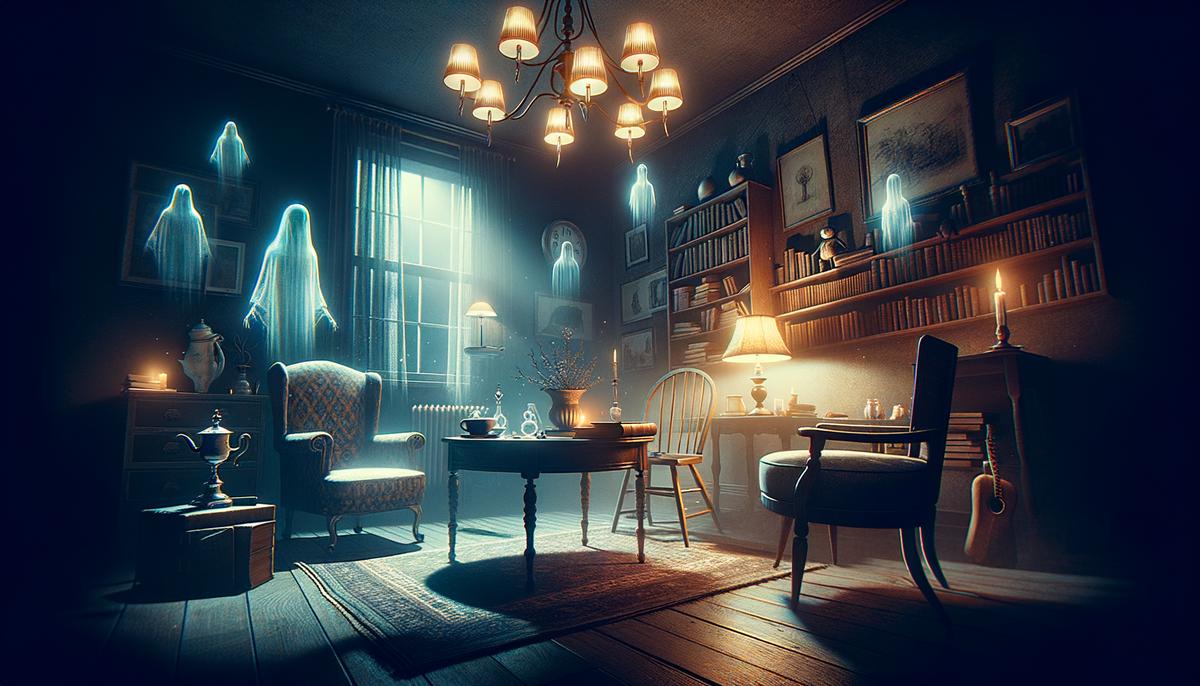
Modern Experiences and Statistics
Recent surveys reveal that 49% of homeowners believe their homes are haunted, a testament to the enduring mystique of the supernatural1. This isn't confined to old mansions; it's happening in modern suburbs, challenging everyday normalcy.
Common Experiences in Haunted Homes
- Disembodied voices: 30%
- Erratic electrical appliance behavior: 27-28%
A striking 91% of those living in purportedly haunted houses have attempted to banish their spectral visitors, employing methods from traditional blessings to high-tech security systems. About 48% believe they have successfully rid their homes of these unseen intruders2.
Statistics show an increase in urban hauntings, with 57% of haunted homeowners living in cities compared to 38% in the suburbs. This suggests that contemporary urban environments are far from immune to the inexplicable.
Age plays a significant role, with Gen Z more likely to believe in hauntings (65%) compared to Baby Boomers (35%). This could reflect a generational openness to the supernatural or greater exposure to horror media.
In their quest for answers, 97% of haunted homeowners have installed security cameras. The footage frequently captures chilling evidence:
| Captured Evidence | Percentage |
|---|---|
| Disembodied faces | 32% |
| Apparent ghosts | 31% |
| Otherworldly creatures | 25% |
Despite identifying prosaic causes behind some supposed hauntings—like pets causing a quarter of mistaken paranormal incidents—there remains a significant portion of occurrences that resist logical explanation.
These experiences, supported by contemporary data and personal testimonies, underscore a profound truth: the supernatural is not a relic of the past but a persistent thread in our modern lives. The ghost stories of yesteryears have not faded into oblivion; they merely await their next chapter in today's homes.
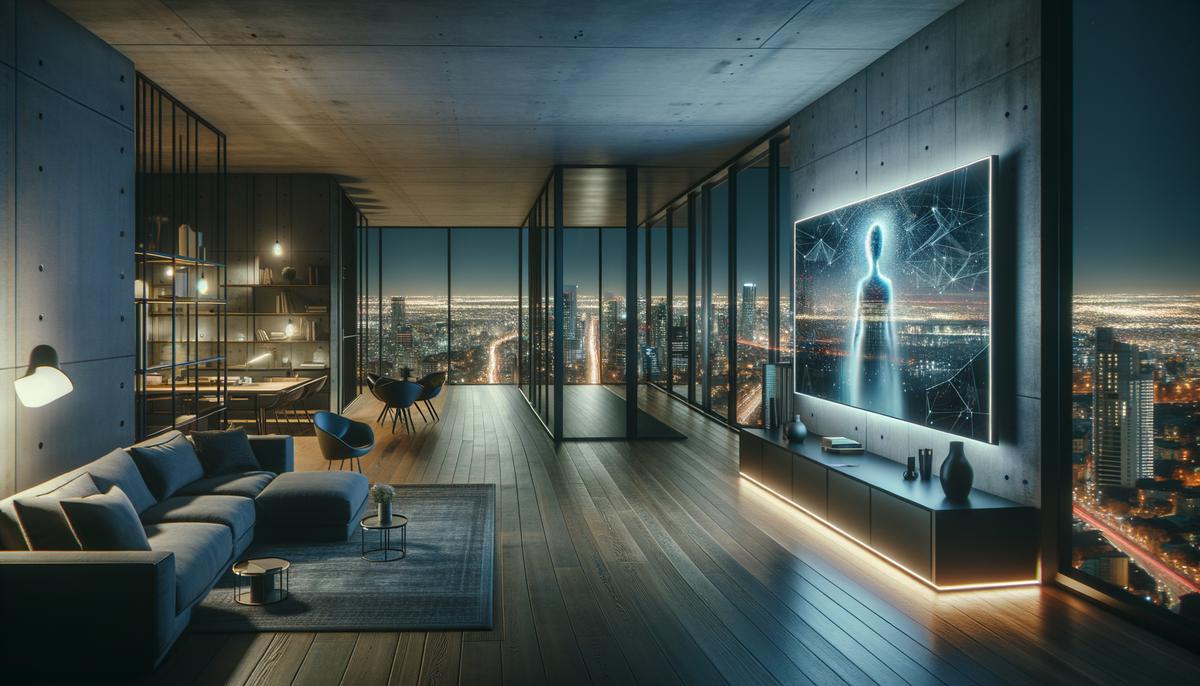
Scientific and Skeptical Perspectives
Despite compelling testimonials of poltergeist activity, scientific and skeptical perspectives offer alternate explanations grounded in psychology and environmental factors.
Psychological theories point to the power of suggestion and pareidolia – our brain's tendency to find patterns in random stimuli. When expecting paranormal activity, people may interpret everyday occurrences as extraordinary. A creaky floorboard becomes a ghostly footstep, while a draft causing a door to swing shut is perceived as a spectral presence.
Stress and trauma can also play a role. Homes with reported poltergeist activity often host individuals experiencing emotional distress. The mind may project internal turmoil outward, creating an environment where the natural and supernatural seem to blend. This is particularly true for cases involving adolescents, as seen with the Herrmann family.
Environmental Factors Contributing to Perceived Phenomena:
- Structural settling of buildings
- Temperature changes
- Rodent activity
- Infrasound – low-frequency sound waves
- Electrical malfunctions
Hoaxes also play a role in some poltergeist cases. The need for attention or sensationalism can drive individuals to create stories or manipulate their environments to fit a haunting narrative. Historical cases reveal instances where supposed poltergeist phenomena were later attributed to human trickery.
Skeptics highlight how memory and perception are susceptible to suggestion and bias. Witnesses of poltergeist activity often share a predisposition towards belief in the supernatural. Once an incident is recounted – like the popping bottles in the Herrmann house – it becomes part of a collective story, potentially distorted by retellings and media representation.
The "power of belief" can lead individuals to experience events that align with their expectations, especially under stressful conditions or in the dark. This self-fulfilling prophecy reinforces perceptions of supernatural presence.
"While scientific explanations may strip away some mystique, they don't diminish the emotional impact these experiences have on those who live through them."
Maintaining a balanced view is crucial. While embracing the wonder of the unexplained, we must acknowledge science's ability to illuminate the shadows cast by our fears. The interplay between belief and skepticism continues to shape our understanding of poltergeist phenomena.
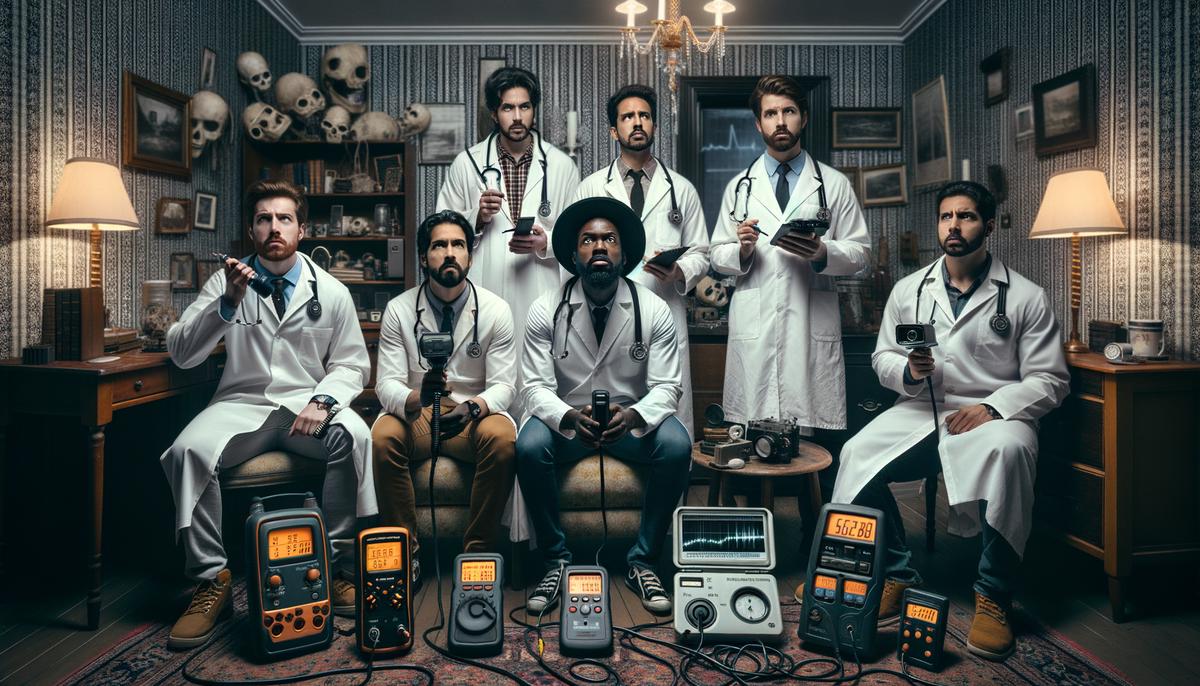
Impact of Media and Pop Culture
Movies and TV shows have significantly shaped public perceptions of poltergeist activity. The 1982 classic Poltergeist brought these mischievous spirits into mainstream consciousness, transforming mundane household disturbances into terrifying experiences.
Media depictions profoundly impact how people interpret real-life events. After watching a film where supernatural forces terrorize a family, it's hard not to jump to paranormal conclusions when strange noises echo through one's home. The visual and auditory cues used in films – sudden movements, eerie music, flickering lights – play on our deepest fears.
Pop culture contributes to the lexicon used to describe these experiences. Concepts like spectral voices and object levitation have been embedded into our collective psyche through repeated exposure in media. When someone experiences an inexplicable event, their frame of reference is often what they've seen on screen.
The portrayal of paranormal investigators in shows like Ghost Hunters adds a layer of perceived legitimacy, suggesting that scientific techniques can confirm the presence of poltergeists. This blend of fiction and purported reality blurs the line between rational explanation and the supernatural.
Poltergeist-Related Media Influences:
- Movies (e.g., Poltergeist, Paranormal Activity)
- TV shows (e.g., Ghost Hunters, Supernatural)
- Online forums and discussion boards
- Podcasts focusing on paranormal phenomena
- YouTube channels dedicated to ghost hunting
Critics argue that films and TV shows over-sensationalize phenomena for entertainment purposes, leading to widespread misinformation. They point out that sensationalism can create an environment of fear and hysteria, causing people to misinterpret natural occurrences or attribute psychological issues to spectral interference.
Nonetheless, the enduring legacy of movies like Poltergeist speaks to our need to explore the unexplainable. While the screen may amplify fear, it also invites us to question and understand the mysterious. Our shared cultural stories about poltergeists enable a discourse that melds fantasy with reality, shaping both our fears and beliefs in compelling ways.
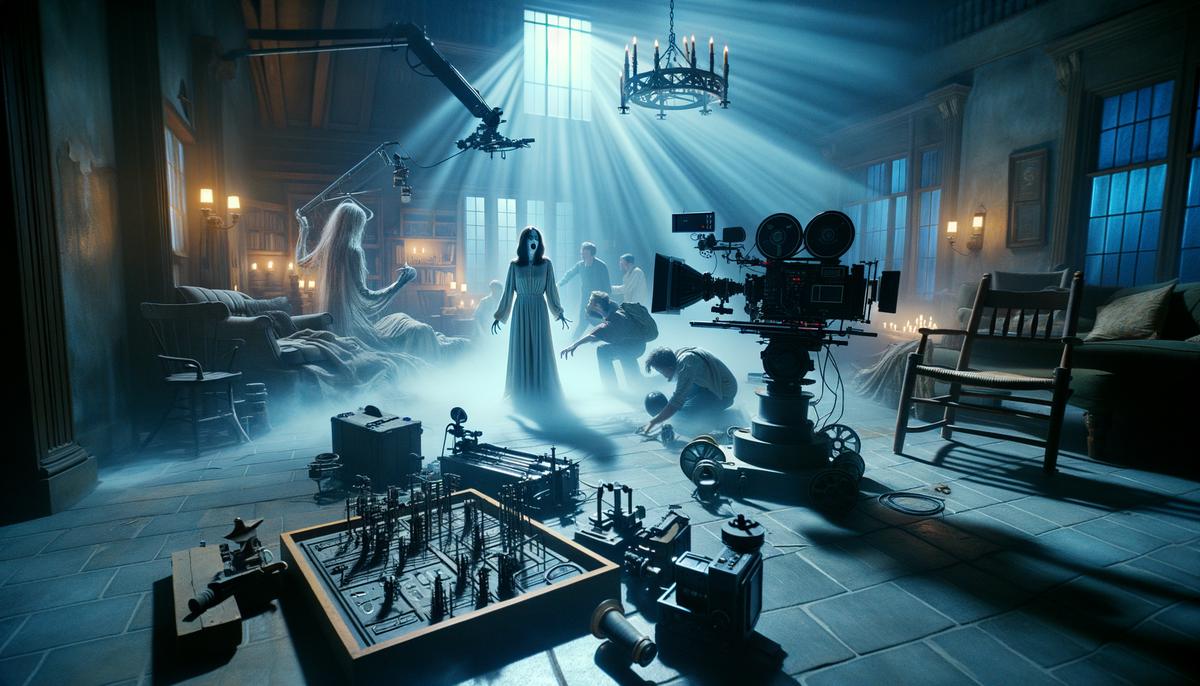
Whether you believe in the supernatural or lean towards scientific explanations, stories of poltergeist activity remind us of the thin line between the known and the unknown. These tales continue to captivate our imagination, urging us to ponder what might lie beyond our everyday experiences.

